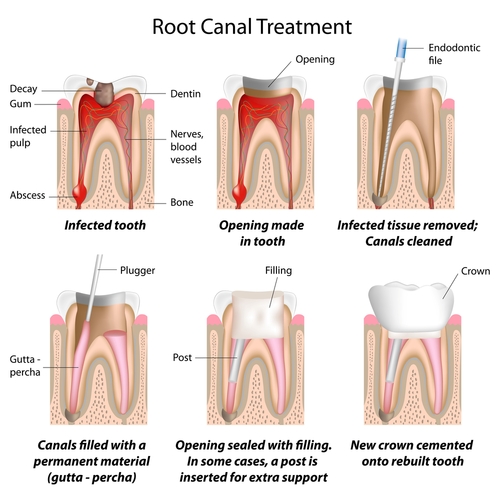
How it happens
A tooth is hard on the outside, a layer called enamel, and softer on the inside, a layer called dentin. Deep inside the soft material, there is a nerve and blood vessels, keeping the tooth alive. When a cavity or fracture goes all the way through the softer inside, it gets to this nerve and damages it. Once the nerve is damaged to the point of infection, there is unfortunately no way to repair it. If left alone the infection will grow and cause pain.
What to Do
To prevent this, or to treat this if it has already happened, we remove the nerve in a procedure called endodontic treatment, commonly known as a root canal. The tooth is anesthetized, or numbed, before the procedure so that it is comfortable. Once the nerve is removed, the middle of the tooth is filled so that bacteria can’t get back inside causing infection to reoccur.
Depending on the condition of the rest of the tooth, either a filling or a onlay or crown is placed to repair the tooth and protect it. Once repaired, the endodontically treated tooth will have no feeling to hot or cold, but otherwise will feel and function as a normal tooth.
